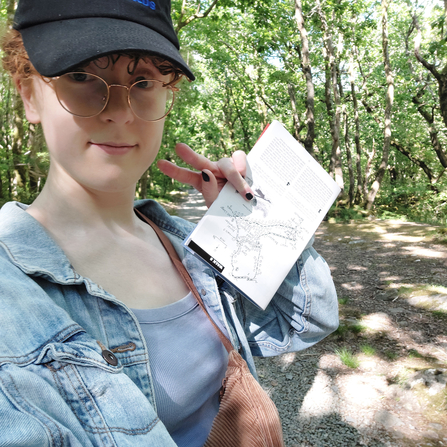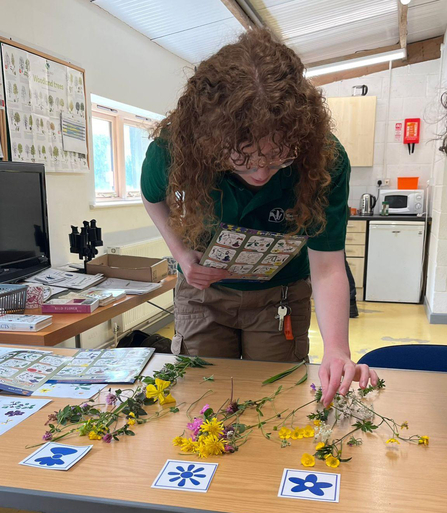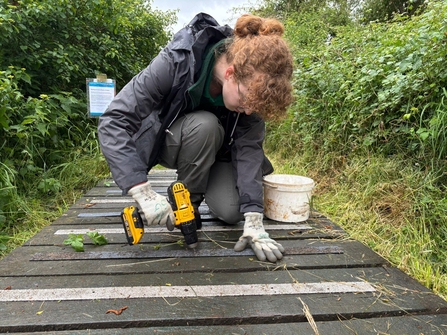Hi I’m Sophie, one of the new conservation trainees!
Chasing my dreams

I found out about the Trust’s traineeships last year but was too late to apply so I am thrilled and still can’t believe I was chosen this year. Everyone has been overwhelmingly welcoming and I feel like I have already settled in very well. The first two months have zoomed past rather fast and I’m excited for what’s instore over the next few months.
I've had a love for nature and the outdoors ever since I was a kid and that very much consolidated itself when I was a teen. On the weekends, dad and I visited nature reserves where we explored the trails and took photos of birds. It helped me though a tough time I was going through and gave me something to look forward to. I am interested in anything and everything about nature - birds and moths are my favourites - and I love learning new things. Although photography is my passion, I have lately found it to be more rewarding to just watch the wildlife; being in the moment rather than obsessing over getting the perfect shot. I do, however, love taking macro photos of insects; the level of detail that can be captured is amazing and often times people don’t notice it.
I always have gone down the path of studies that interest me, studying art for my A levels and I took a course in animal care, before winding up graduating from my university studies of Animal Behaviour and Wildlife Conservation. I've volunteered with Butterfly Conservation and RSPB as well as with the Trust at The Devil’s Spittleful nature reserve. It was natural for me to want to pursue a career in wildlife conservation but even with my degree it seemed nigh on impossible to gain a foothold in the field. So I'm hoping this traineeship will provide me with the skills I need to be able to do what I love.

I've already been involved with many tasks, such as the fabled fencing at Hornhill Wood, creeping thistle pulling (an invasive species) with the roving volunteer group at Hardwick Green Meadows and even completing leadership and botany training. The former was surprisingly very involved with a lot of different steps that Andy B, our mentor, helped us with. The last part was adding the netting to the final two sides of the area; attached with hog rings using hog ring pliers (small metal rings). How it is attached is very important as the tension needs to be maintained so deer cannot get in and nibble the growing trees. For that same reason an area of netting is left overhanging onto the ground (called a skirt) that brash is piled onto.

I also joined Andy H, one of the reserves team, and some volunteers for a couple of Fridays to help out with the work being carried out at Blackstone Farm Fields and Dropping Well Farm. Both areas are next to The Devil’s Spittleful reserve, which I'm very familiar with. It's a heathland site with a rich history. Unfortunately we've lost a lot of our heathland habitat so places like this are smaller, fragmented parts of what was once a much larger habitat running through Worcestershire. The Trust is working hard to restore Dropping Well and Blackstone back to heathland through grazing, to prevent excessive scrub growth, and lowering nutrient levels in the soil so that heathland species can grow. Four circular fenced-in areas have been built in Blackstone as an experiment to see how the vegetation reacts. Livestock will be grazing the field to control levels of scrub but there still needs to be some small pockets of scrub left to benefit wildlife. Sheep’s sorrel was spotted in the field, which is a good sign for heathland already; the plant thrives in acidic low-nutrient soil. I helped plant cornflower, thyme, sheep’s-bit and corn marigold into a ploughed patch on Dropping Well Farm. The seeds for these plants had been gathered from The Devil’s Spittleful in 2024 and then grown at a local nursery; if all goes to plan, these plants will repopulate the heathland restoration areas on Dropping Well Farm.

I gained my brushcutter licence last month and I've already put my learning into action at Upton Warren. We trainees took it in turns to cut the overgrown vegetation by the side of the path, using loppers to trim some overhanging branches and attached more anti-slip strips to the boardwalk. This all makes it more accessible to visitors, which is important as nature should be available to all.
All in all, I am learning lots and I can’t wait to get stuck in with whatever the next task holds in store. See you in my next blog!

